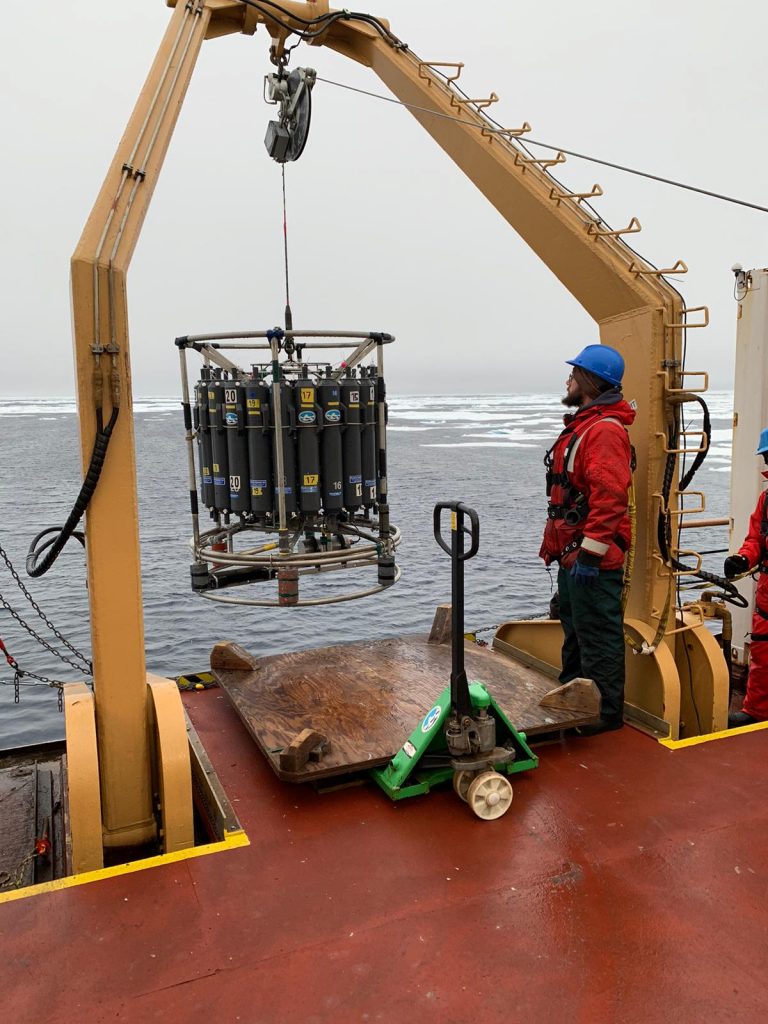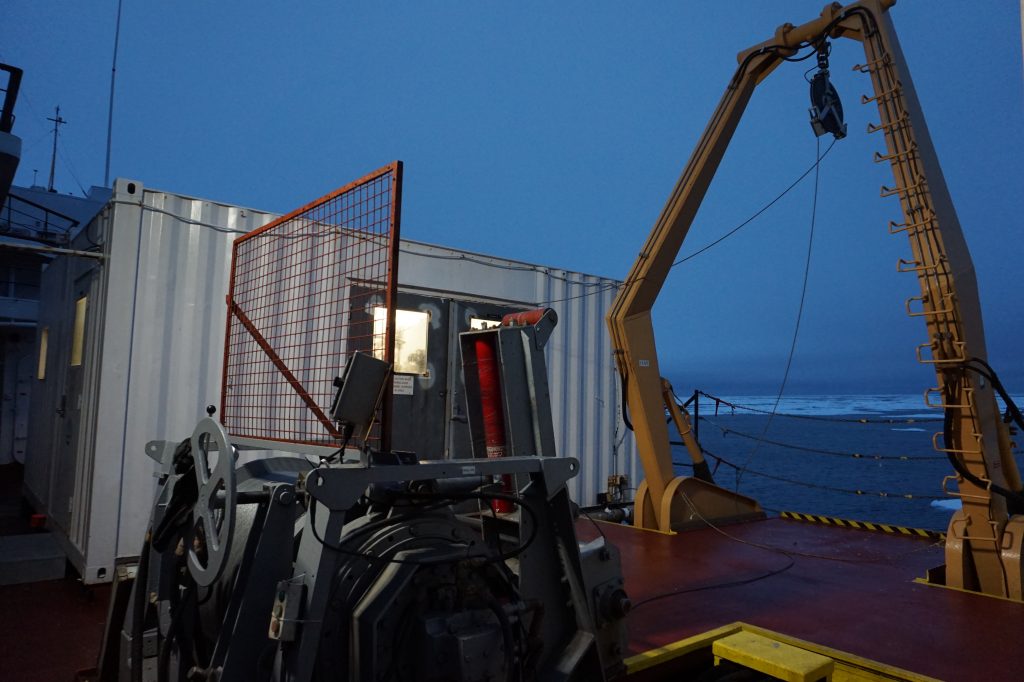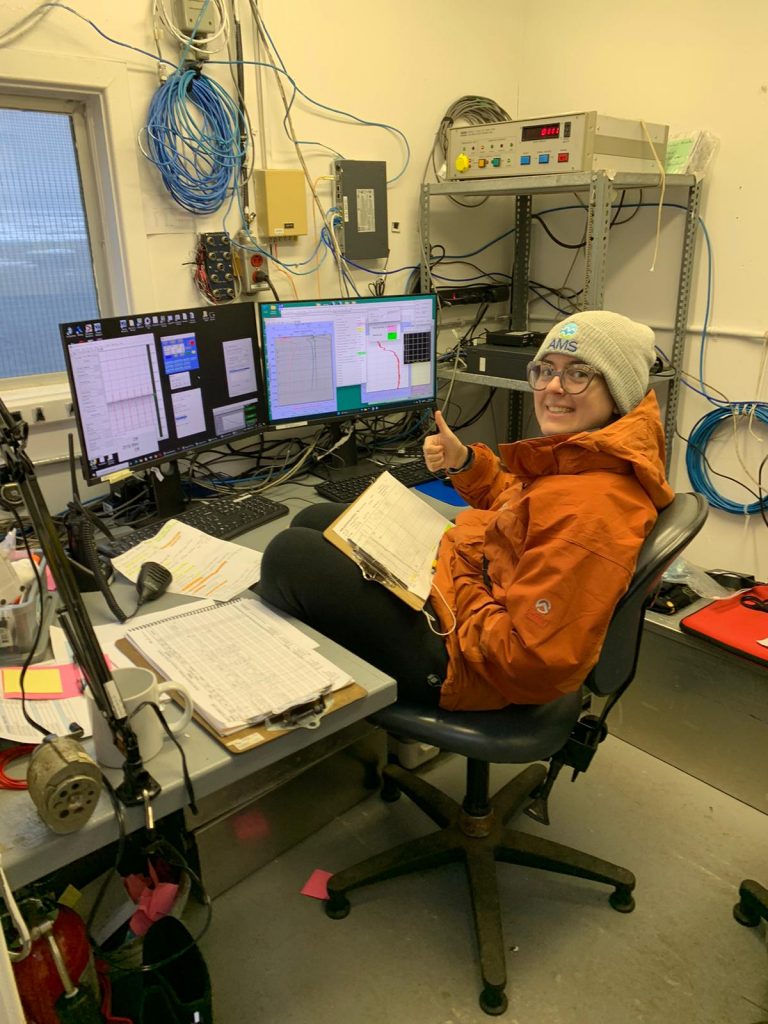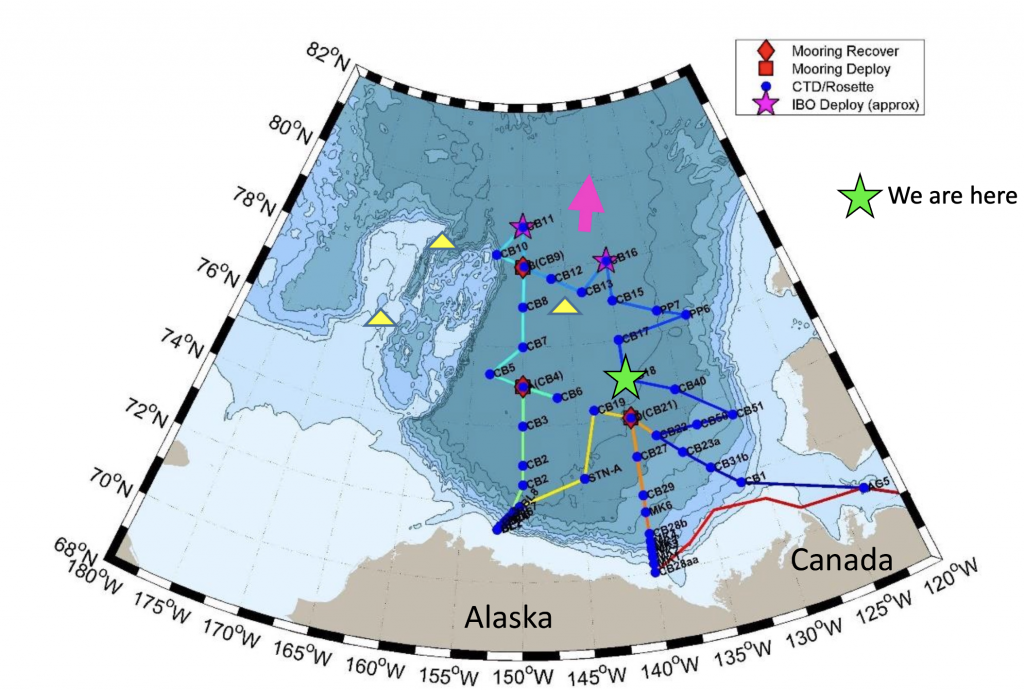Dispatch 6: CTD on Deck!
Annika Margevich
September 20, 2023
Dispatch 6: CTD on Deck!
One of the main instruments we deploy at each station is a CTD, which stands for Conductivity, Temperature, and Depth. It’s a large cylindrical frame with sensors and Niskin bottles mounted on it. The sensors, which are mounted at the bottom and in the center of the CTD, give us conductivity (i.e., how much salt is in the water), temperature, and pressure, from which we can calculate depth. There are additional sensors that measure photosynethically available radiation (PAR) which tells us the light levels for algae, oxygen, turbidity, fluorescence, colored dissolved organic matter (CDOM), and chlorophyll. The 24 Niskin bottles mounted around the frame allow us to capture water from different depths and sample them once on board to do a variety of tests, which you will here more about in the coming dispatches. Before sending the CTD into the water, each of the Niskin bottles are latched open with a string onto a switch. When we want to close the bottle in the water, all we have to do is click a button on our computer which flips the switch and lets go of the string so that the bottle closes with the water inside.
The CTD is stored in a heated container. It is attached to a wire that transmits the measurements from all the sensors to our computer in real time as we lower it through the water. When we are ready to deploy it, the deck crew wheels the CTD out on a palette, and the winch operator lifts it up and lowers it into the water. When it gets really cold, we have to do this process quickly so that none of our sensors freeze and break. Once it is in the water, we see the data in our CTD computer lab located to the right of the winch. On the way down, we monitor the data and determine where we want to collect our water samples in the Niskin bottles and record the depths in a log. When we get 100 meters from the bottom of the ocean, the altimeter kicks on and tells us how far from the bottom we are. An altimeter is a sensor that sends out a 500 kHz acoustic, or sound, pulses to 100 m, so when we are within 100 meters of the bottom, its pulse will only travel the distance between the CTD and the bottom. This gives us the distance between the CTD and the bottom, which is super important because we never want the CTD to hit the bottom and risk damaging the sensors. When the altimeter reached 10 meters from the bottom, we stop the CTD and bring it back to the surface. On the way up, the CTD computer operator is responsible for closing bottles at the pre-determined depths where we want water samples from. Once we are bringing the CTD up and collecting samples, we cannot lower the CTD again in the same cast because that could compromise the samples in closed bottles, so the computer operator has to pay close attention as to not miss a bottle. When all the samples are collected and the CTD is back at the surface, the deck crew and the winch operator work together to get the CTD back on board safely and into the container where sampling begins. There will be another dispatch that explains all about how sampling works! CTDs are an incredibly useful tool to gather information about our oceans, but they are big and heavy so operating them comes with some hazards. That is why effective comunication between the winch operator, deck crew, and CTD lab is crucial to keep the crew and the CTD safe!



